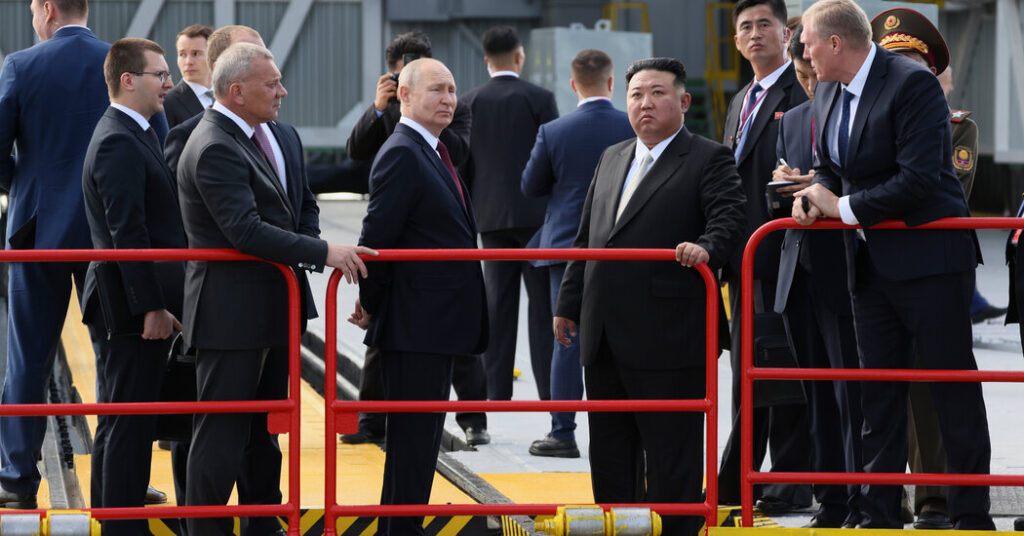Russian President Vladimir V. Putin will begin a two-day visit to North Korea on Tuesday to meet with one of the main arms suppliers to its war in Ukraine.
As the war dragged on, Russia found itself in dire need of the conventional weapons North Korea could provide, including artillery shells.
Here’s some background on what’s happened so far and why it matters.
What do we know about early arms transport?
As early as September 2022, seven months after the war broke out, the United States accused North Korea for the first time of selling artillery to Russia. At the time, North Korea denied the accusations.
Then, last August, the White House warned Putin and North Korean leader Kim Jong Un of ongoing arms talks, and in September, Kim Jong Un visited Putin in eastern Russia. Weeks later, U.S. officials said North Korea had shipped more than 1,000 containers of weapons to Russia for use in the war in Ukraine. As of March, North Korea had shipped nearly 7,000 containers of weapons to Russia, officials said.
South Korea’s defense minister said the containers could hold up to 3 million rounds of ammunition if filled with 152mm artillery shells. Alternatively, if loaded with 122mm rockets, they can hold over 500,000 rounds. They may also have a mixture of the two weapons, he said. Minister Shin Wok-sik last week put the number of containers shipped from North Korea to Russia at 10,000 in the latest estimate.
Separately, the White House said in January that Russia had begun launching ballistic missiles produced by North Korea. Arms control experts say fragments of the short-range Mars 11A ballistic missile were found after months of Russian air strikes on Ukrainian cities, including on Kharkov in February. North Korea may also provide anti-tank missiles, man-portable surface-to-air missiles, as well as rifles, rocket launchers, mortars and artillery shells, South Korean military officials told reporters in November.
Moscow and Pyongyang both deny the arms trade, which is prohibited by U.N. sanctions.
How important are these weapons?
The war in Ukraine is a war of attrition, with Russia and Ukraine trying to win with firepower, firing thousands of artillery shells, missiles and rockets every day. This means that all munitions provided by North Korea help Russia maintain its advantage over Ukraine.
Experts said that especially the Mars 11A series missiles have high accuracy and are difficult to shoot down.
But at least some of the other weapons are considered archaic or otherwise somewhat ineffective. When asked last fall whether North Korea’s supply of 152-millimeter shells would have a significant impact on the battlefield, Gen. Mark A. Milley, then the top U.S. military official, said he doubted it would be “decisive.” .
“Will it make a big difference? I doubt it,” he said shortly before resigning as chairman of the Joint Chiefs of Staff.

